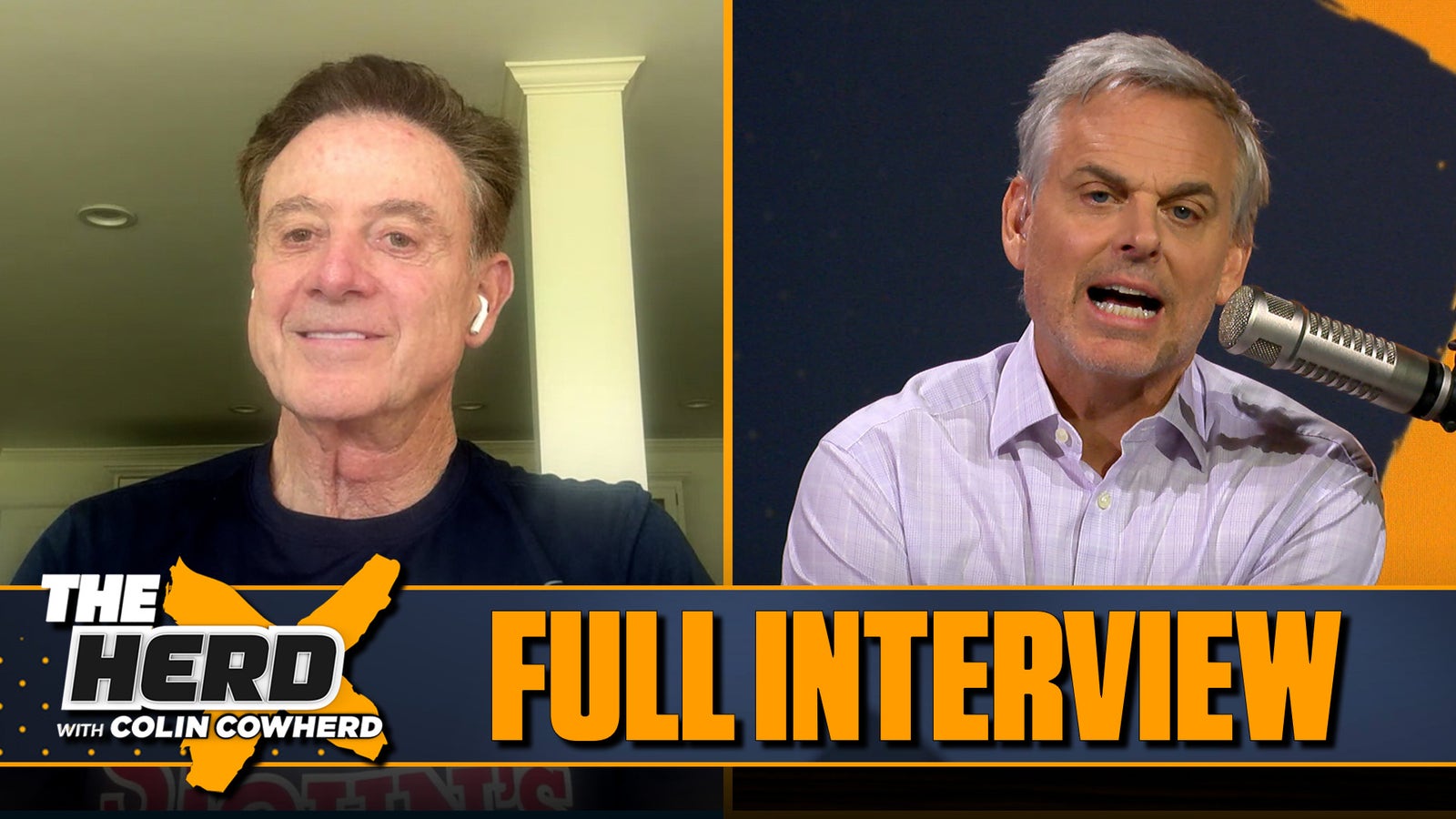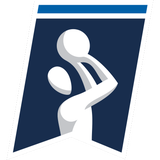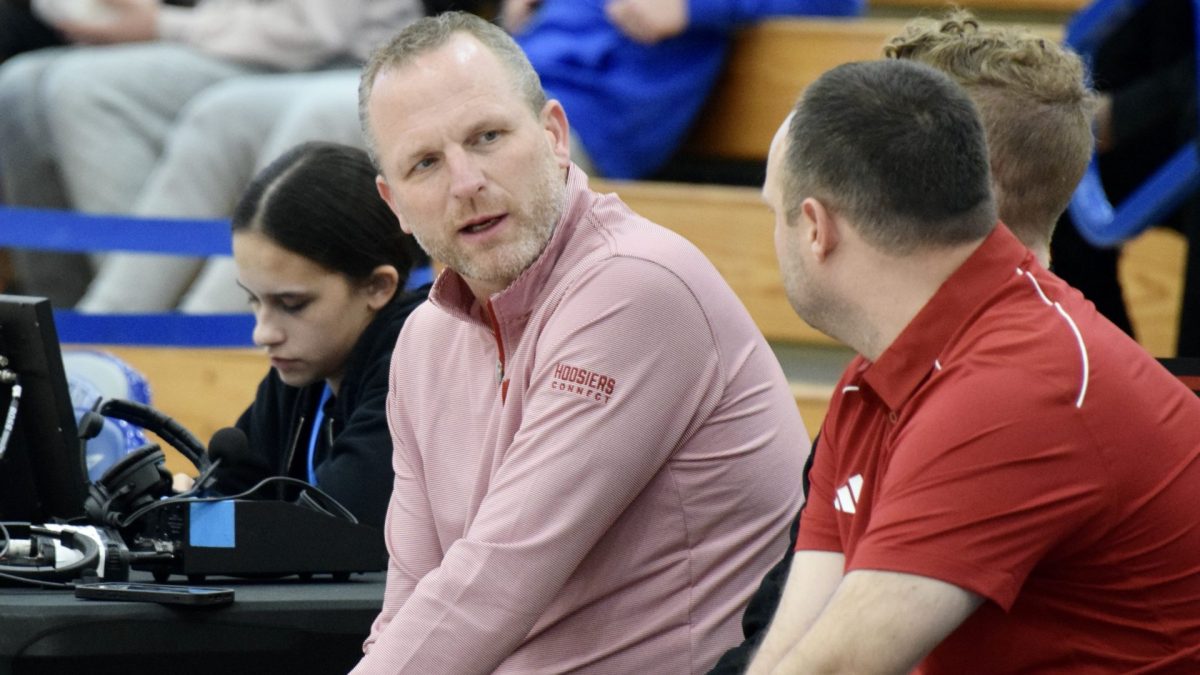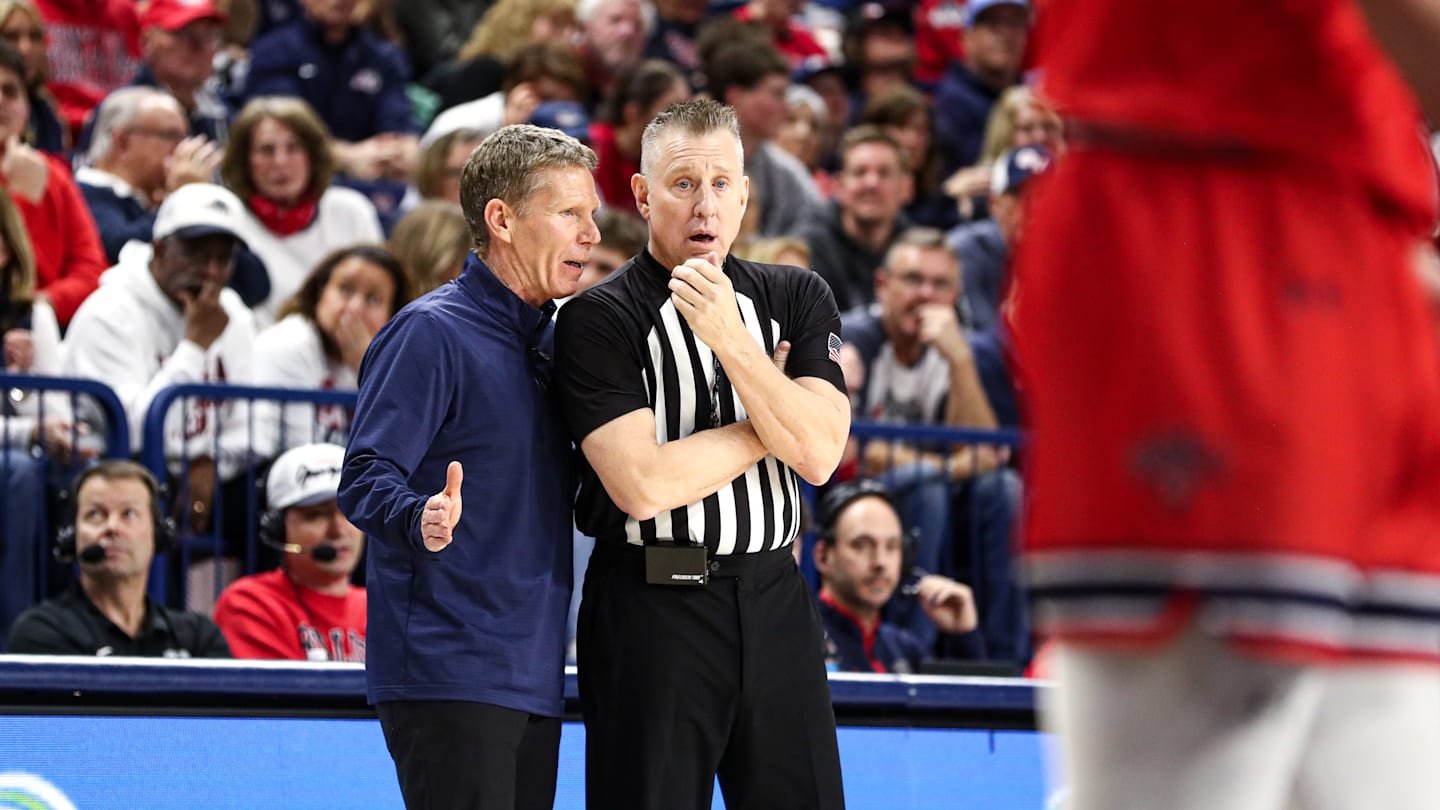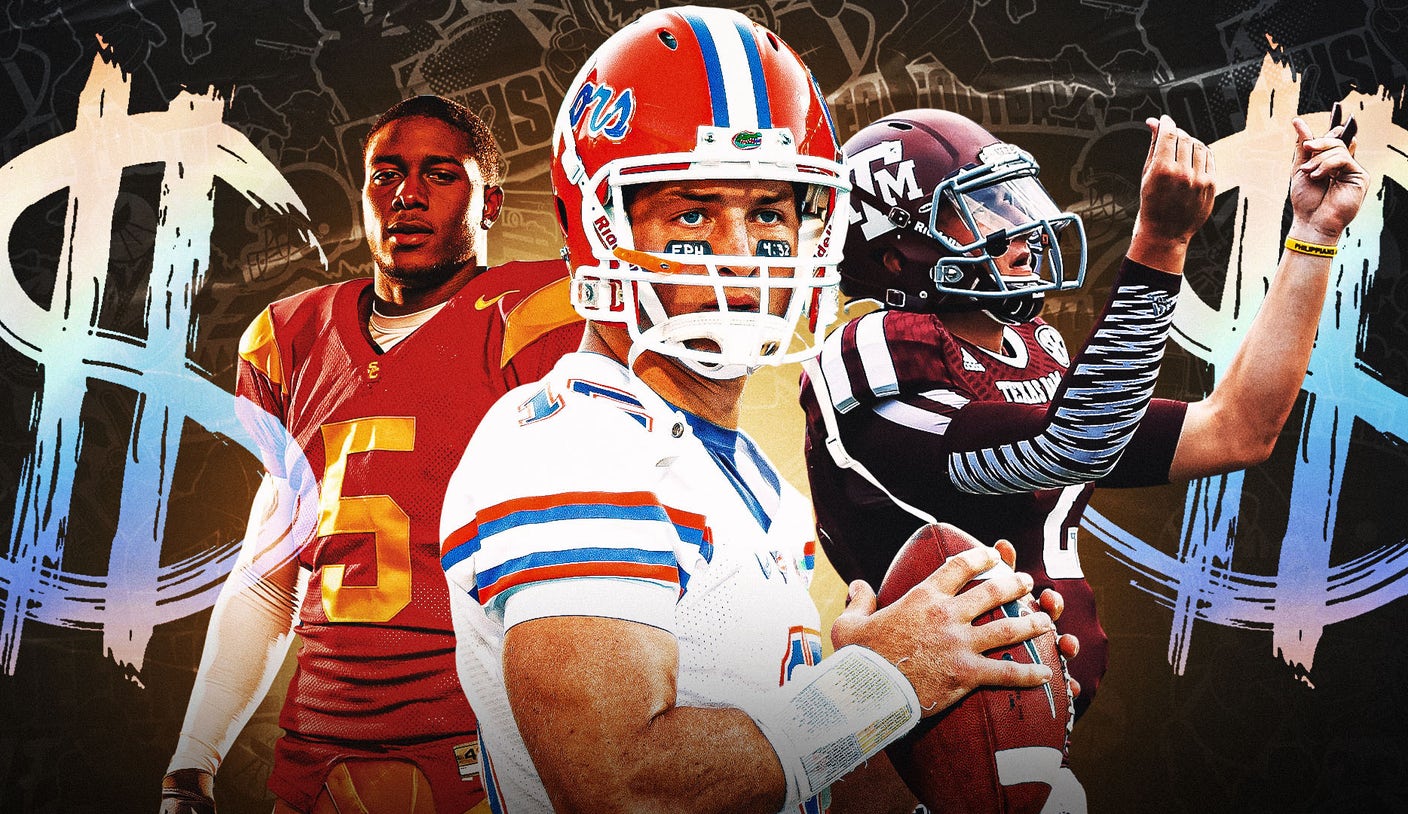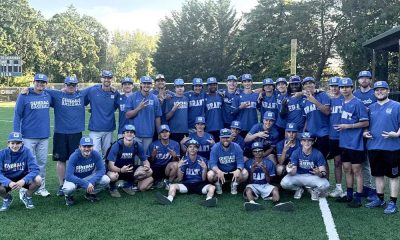
As June trends towards July, the Texas Longhorns baseball staff is swimming in the proverbial mud.
“You know you’re going to get there, but it’s it’s tough and it takes a while,” Texas head coach Jim Schlossnagle said in an appearance on the Around the Horns podcast.
In the middle of the busiest stretch of the year for baseball coaches, the Longhorns have been focused on roster management with the NCAA transfer portal open and the 2025 MLB Draft looming next month after the portal closes.
That means 18-hour days as 12 players have departed the program and eight players have committed, pushing the 2026 roster much closer to completion ahead of the draft.
“I think from a pitching staff standpoint, we feel really good about the guys that are coming back. I don’t know if they’ve made public announcements just yet, but they’re close. I think we’re going to return a really good core group of the pitching staff, which is a great spot to start,” Schlossnagle said.
A leader in that returning group is left-hander Dylan Volantis, the SEC Freshman of the Year who set the freshman record for conference saves with 11. The spike curveball of Volantis the highest-quality pitch on the staff for assistant Max Weiner as the strength and conditioning staff tries to add enough strength to the wiry frame of Volantis to tick up his fastball velocity.
That’s one of the factors that could determine whether Schlossnagle and Weiner decide to move Volantis in the starting rotation or keep the California product in his closer role.
Left-hander Luke Harrison received recognition on Senior Day as a redshirt junior, but could return to the weekend role that he shined in during the 2025 season when he posted a 5-1 record with a 3.06 ERA while holding opponents to a .237 average.
Texas also anticipates a return from right-hander Ruger Riojas, a bullpen staple before moving into the starting rotation for 10 games following the season-ending injury sustained by left-hander Jared Spencer. Riojas was phenomenal before illness and overall fatigue reduced his effectiveness down the stretch.
Texas also returns a number of veteran arms with starting and relief experience like right-handers Max Grubbs and Thomas Burns, emerging veteran right-handers like Ole Miss transfer Grayson Saunier and Baylor transfer Cody Howard, and promising young power arms like right-handers Jason Flores and Drew Rerick. Left-hander Ethan Walker and right-hander Hudson Hamilton also pitched well late in the season.
From the transfer portal, Texas landed left-handed power arms in Western Kentucky transfer Cal Higgins and Mississippi State transfer Luke Dotson.
The leading returning position players include the versatile Adrian Rodriguez, second baseman Ethan Mendoza, and outfielder Jonah Williams, who could take over the center-field role vacated by the departed Will Gasparino, assuming he continues to balance baseball with football.
“Just hoping he makes it back to us,” Schlossnagle said of Williams, who hit .327 in 20 appearances and 15 starts as a freshman.
Draft-eligible sophomore Casey Borba also projects as a key returning player.
“Casey Borba really made a great push at the end of the year,” Schlossnagle said.
Capable of playing both of the corner infield spots, Borba made late-season progress in diversifying his pull-heavy approach that allowed opponents to make routine plays on hard-hit balls into the shift employed against Borba.
Over the final seven games of the season, Borba went 13-for-26 at the plate with three home runs and 14 RBI, including a career-best 4-for-5 effort with two home runs and eight RBI in the Austin Regional elimination game against Kansas State. During that stretch, Borba boosted his average from .235 to .278.
A strikeout rate of 30 percent is certainly an acceptable number for a player with the team’s third-best OPS at .984, especially if he can improve his batting average on balls in play by using the whole field more consistently.
Meanwhile, some transfer additions have made public the behind-the-scenes expectations for the MLB Draft. Right fielder Max Belyeu is a clear projected departure as a projected second-round draft pick, but landing a shortstop and a catcher from the transfer portal provide strong indications about the futures of Jalin Flores and Rylan Galvan.
Beyond addressing those specific middle-of-the-field positions that form the backbone of any good baseball team, Schlossnagle has made versatility a priority.
“We’re really focused on multi-positional players, guys that can do a lot of different things,” Schlossnagle said.
The results of those efforts make clean projections more difficult for how next year’s roster solidifies into consistent roles, particularly with additions like Georgia State transfer Kaleb Freeman, who can play second base, right field, and catcher, and Wichita State transfer Josh Livingston, who can play first base, second base, and third base.
Butler transfer Jack Moroknek and Seton Hall transfer Aiden Robbins can both play all three outfield positions, setting up an intriguing competition to determine where those two small-school standouts project around Williams.
Projections are more clear for Stanford transfer Temo Becerra, next year’s starting shortstop unless he’s unexpectedly out-competed by someone like Rodriguez, and especially for Notre Dame transfer Carson Tinney, one of the nation’s best catchers who will provide power in the middle of the Texas lineup.
Schlossnagle expects Rodriguez to play on the left side of the infield after replacing Mendoza at second base due to his shoulder injury and playing some left field due to injuries and ineffectiveness.
“I think he’s capable of doing a lot of things for us in the infield, maybe even competing at shortstop. Certainly going to be competitive at third base and would like to see him back on that side of the field, if possible,” Schlossnagle said.
The transfer additions aren’t just multi-positional, though — they provide a better balance to a Longhorns lineup that had almost none on campus when Schlossnagle arrived a year ago.
“The day I took the job at Texas, we had one left-handed hitter in the whole program. Think about that for a second. That’s just complete insanity for any program, but especially a place like Texas,” Schlossnagle said. “So we’re trying to get left-handed hitters, switch hitters, guys that provide lineup balance, the things that most of the really good teams have. We know what it’s supposed to look like from the places that we’ve been, from what Texas has been in the past.”
Robbins, Becerra, and Tinney are all right-handed hitters, but Freeman is a switch hitter, and Moroknek and Livingston both hit from the left side. The top position player in the 2025 expected to make it to campus, outfielder Anthony Pack Jr., also hits from the left side and could provide speed in a situational role.
Shortstop Kayson Cunningham and third baseman Gavin Fien both project as such high draft picks they should sign quickly, but Schlossnagle did express optimism about a group of pitchers that includes high-upside arms like right-hander Brett Crossland, a top-100 prospect by MLB.com, Sam Cozart, and Cooper Rummel.
“The young pitchers, we’re super excited about. I think we’re in good spots with those guys. But as you know, it only takes one team,” Schlossnagle said.
As the Texas staff builds the roster in its image, the expectation is fewer transfer portal additions in future years with the 2026 class expected to have a major impact.
“The ‘26 class is as talented of a group as I’ve ever been a part of recruiting. Will the draft hit that? Sure. Honestly, if we can just get 50 to 60 percent of that class on campus, then we can start to turn the tide a little bit on the base level talent of the freshman and sophomore classes. That way you go into the portal and you just cherry pick it here and there versus having to sign four or five position players or something,” Schlossnagle said.
What Schlossnagle is trying to avoid is the cycle that Georgia finds itself in having to take 15 players out of the transfer portal.
“The problem with doing that in the portal is then you get maybe have to do it again the following year,” Schlossnagle said. “And so at what point do you cycle through it?”
It’s where Texas should be entering the 2026 season after fielding a 2025 roster that will be more balanced and more capable of overcoming key injuries, even if it doesn’t project as having the level of talent it will in Schlossnagle’s third season.
But it’s the level of development that will ultimately define the upside of the 2026 Longhorns, as Schossnagle has pointed out to the transfers they’ve brought in.
“We show these kids like you’re not just a plug-and-play player. You’re going to come here and get better, you’re going to get stronger, you’re going to be in our system, our processes, whether it be as a pitcher or position player, and you’re going to get better.”
0
